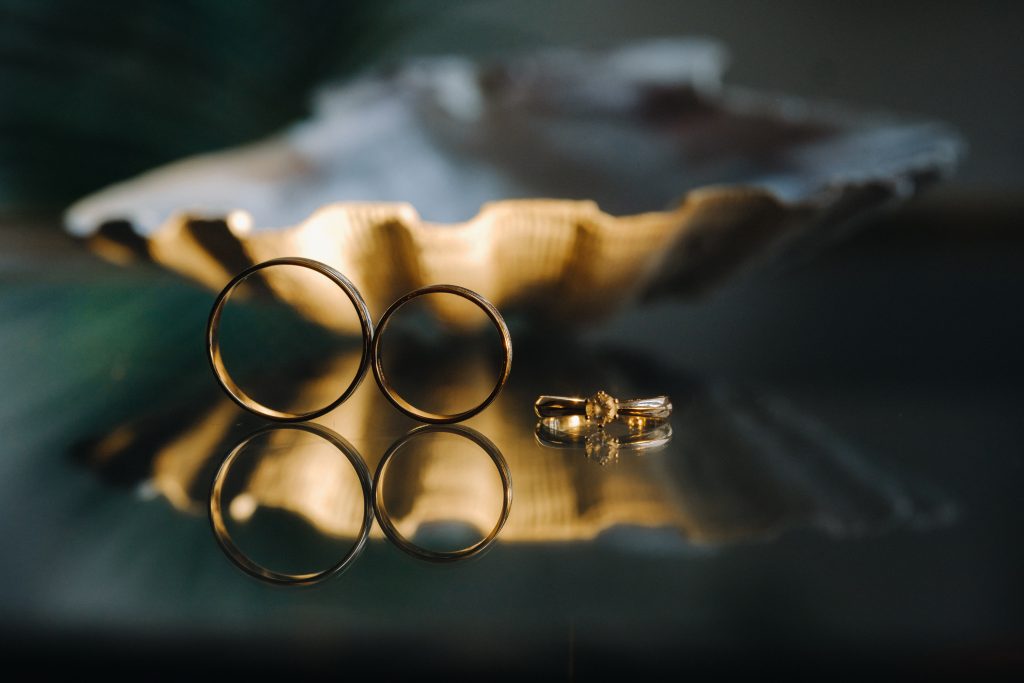The history of the engagement ring
The engagement ring, ideally with a diamond, has symbolized commitment for nearly a century, but its history is far richer and more ancient than the diamond trend would suggest. The concept of the engagement ring, as a sign of loyalty and intention to marry, stretches back to prehistory. Here’s a journey through the evolution of the engagement ring and its transformation over time.

From Prehistory to Ancient Egypt: Early Symbols of Commitment
The earliest form of “engagement rings” can be traced to prehistory. Evidence suggests that early humans marked commitment by tying cords of braided grass around their partner’s wrists, ankles, or waist as a symbol of connection. In Ancient Egypt, the ring evolved to signify a more spiritual bond, and Egyptians placed rings on the third finger of the left hand, which they believed connected directly to the heart through the “vena amoris,” or “vein of love.” People were even buried wearing these rings, often made of silver or gold, which is why this tradition remains a part of engagement and wedding customs to this day.
Iron Rings and Symbolism in Ancient Rome
The use of engagement rings gained prominence in Ancient Rome, where they symbolized a man’s ownership of his bride. In the 2nd century BC, Roman brides received two rings: a gold one for ceremonies and an iron one for everyday wear at home. This iron ring served as a symbol of the groom’s commitment, even though the concept of love and equality was not always central to Roman marriages. A century later, puzzle rings, which held various parts together, became popular among sultans and sheiks to symbolize bonds with multiple wives, while also signifying the complex relationships of the time.
The First Diamond Engagement Ring: Archduke Maximilian and Mary of Burgundy
The first recorded diamond engagement ring appeared in 1477 when Archduke Maximilian of Austria proposed to Mary of Burgundy with a ring set with diamonds in the shape of the letter “M.” This gesture marked the beginning of diamond engagement rings as a symbol of wealth, loyalty, and status, influencing European nobility for centuries. This regal choice set the standard for diamond rings as symbols of enduring love.
DeBeers and the Birth of the Diamond Engagement Ring (1873–1947)
The diamond’s association with engagement rings became a global trend much later, thanks to a groundbreaking campaign by the DeBeers Mining Company. Established in 1873, DeBeers initially mined and distributed diamonds for luxury buyers. However, in 1938, DeBeers launched a campaign with the advertising agency N.W. Ayer to market diamonds to a broader audience. Through extensive research, the campaign connected diamonds with romance and everlasting love, creating a new demand.
The campaign’s success culminated in the now-iconic slogan, “A diamond is forever,” which was first introduced in 1948. This slogan, which discouraged resale and reinforced the diamond’s association with enduring love, was later named the top advertising slogan of the century in 1999.
The 20th Century: Big Brands and Lasting Innovations
The rise of diamond engagement rings continued into the 20th century with innovations by luxury brands. In 1886, Tiffany & Co. introduced the Tiffany Setting, a design that raised the diamond from the band, showcasing its brilliance and making it more radiant. Cartier also contributed with the Trinity Ring in 1918, which featured interlocking bands in three colors of gold: pink (for love), white (for friendship), and yellow (for loyalty). These iconic designs paved the way for more variety and choice in engagement rings and are still popular today.
As diamond demand grew, the World Diamond Council was established in 2000 to promote ethical practices in the diamond industry. Its mission included preventing the exploitation of diamonds for conflict or illicit activities, reinforcing the notion that diamonds should symbolize love and purity.
The 21st Century: Modern Styles and Lasting Tradition
Today, engagement rings remain a staple of proposals, especially in the United States and Europe. Diamond engagement rings, however, are no longer the only option. Contemporary couples are increasingly interested in unique materials, colored gemstones, and custom designs. Alternative gemstones like sapphires, emeralds, and even lab-grown diamonds are gaining popularity, providing couples with budget-friendly, ethical, and colorful choices. Nevertheless, diamonds and the “two months’ salary” guideline from the 1980s remain strong influences, with traditional diamond rings still seen as the epitome of engagement.
In the end, while engagement ring styles and preferences have evolved, the meaning of the engagement ring as a lasting symbol of love and commitment remains as strong as ever, continuing a tradition that spans centuries and cultures.
Posted in Bridal Jewelry, Engagement Rings, Wedding Traditions
Tags: diamond engagement ring, engagement ring history, engagement rings interesting facts, engagement rings marketing, engagement rings timeline, engagement-ring, Her Wedding Planner, HerWeddingPlanner, The DeBeers Mining Company, wedding, wedding planner







